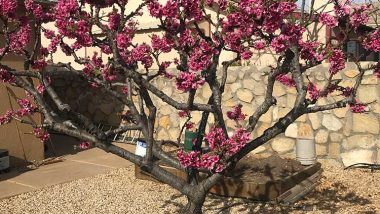Last updated on January 3rd, 2026 at 06:03 am
The Angel wing begonia plant care (Begonia maculate ). Learn how to make this plant thrive in your home.
This great-looking houseplant has the unique feature of spotted leaves. When I first saw this plant I was amazed at its looks. A brown underside with light silverish spots on its leaves that resemble wings! It also produces bright, dark pink blooms during mid-summer.
Like all begonias, it is a succulent, meaning it retains water on its stems and leaves. It is native to South America but does well almost anywhere in the southwest states. This plant is a hybrid, meaning it is cross-pollinated with other species.
Where to place Angel Wing Begonia
Place it further back indoors where it can get less full light and more indirect sunlight. As mentioned before, it is a succulent, so it doesn’t need a lot of water, but it’s important to check your soil regularly. It likes the soil to be slightly dried out before watering again.
Watering around one or two times per week, but it does depend on where you place this Begonia. If it is inside in front of a south-facing window, water it more often; remember it does not like full direct sunlight all day. Avoid overhead watering, water at the soil level for best results, and make sure the container is draining well.
Anything lower than 50°F, and it will struggle; it’s just too cold. 65-70 Degrees Fahrenheit is the ideal temperature for this plant.
The Flowers of the Angel Wing Begonia
The flowers are a waxy, deep, dark pink and will usually bloom in mid-summer indoors. To make it bloom longer and often use a good fertilizer with a higher content of Phosphorus. It is the middle number on all fertilizers. Or use a good all-purpose liquid fertilizer. Visit your locally-owned Nursery for these fertilizers.
Problems with the Angel Wing Begonia
One big problem with this plant is Powdery mildew, usually from too much water, shade, or over-misting your plant. The best thing to do is to let the plant dry out and prune off the affected leaves. They spray with a good fungicide, and it is best to take the plant outdoors when spraying with fungicide.
They’re prone to whiteflies, aphids, and spider mites, which can cause serious damage if left unchecked. Check your plant regularly, paying close attention to the undersides of leaves where these pests often hide. If you spot any signs of infestation, act fast. Neem oil works well to tackle both insects and powdery mildew. Spray it directly on affected areas, covering all surfaces thoroughly. Reapply as needed to prevent these issues from recurring. Regular monitoring and quick action can help keep your plant healthy and thriving.
Learn more about Insects and Diseases on Plants

More houseplants at Indoor Houseplant Names
Got questions about this Plant? Comment Below.

Greenhouse Manager, Master Gardener, and Webmaster.
If you have any questions or enjoyed this post, feel free to share your thoughts in the comments below.




